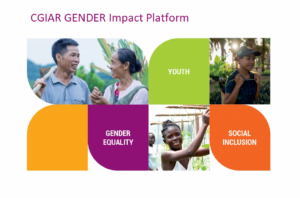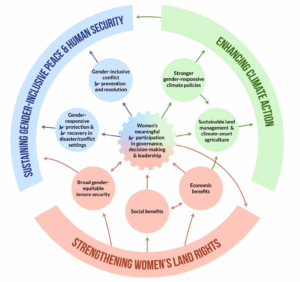In this paper, the authors describe the adaptation and validation of a project-level WEAI (or pro-WEAI) that agricultural development projects can use to identify key areas of women’s (and men’s) disempowerment, design appropriate strategies to address identified deficiencies and monitor project outcomes related to women’s empowerment. The 12 pro-WEAI indicators are mapped to three domains: intrinsic agency (power within), instrumental agency (power to), and collective agency (power with). A gender parity index compares the empowerment scores of men and women in the same household. The authors describe the development of pro-WEAI, including:
- Pro-WEAI’s distinctiveness from other versions of the WEAI;
- The process of piloting pro-WEAI in 13 agricultural development projects during the Gender, Agriculture, and Assets Project, phase 2 (GAAP2);
- Analysis of quantitative data from the GAAP2 projects, including intrahousehold patterns of empowerment/disempowerment; and
- A summary of the findings from the qualitative work exploring concepts of women’s empowerment in the project sites.
The paper concludes with a discussion of lessons learned from pro-WEAI and possibilities for further development of empowerment metrics.
Authors: Hazel Malapit, Agnes Quisumbing, Ruth Meinzen-Dick, Greg Seymour, Elena M. Martinez, Jessica Heckert, Deborah Rubin, Ana Vaz, Kathryn M. Yount, and the Gender Agriculture Assets Project Phase 2 (GAAP2) Study Team
Source: World Development




